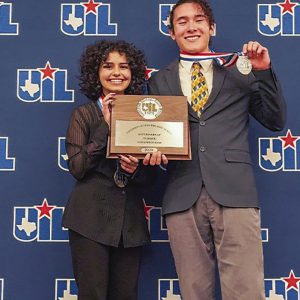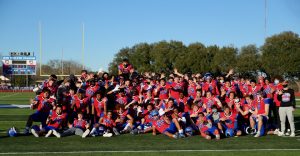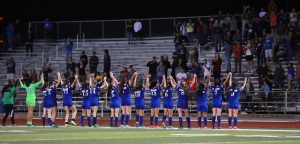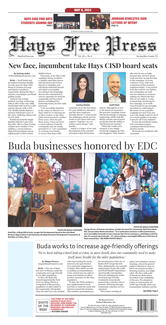By Moses Leos III
While the game of football is “safer as it’s ever been,” UIL Executive Director Charles Breithaupt said on May 17 there is still much deserved scrutiny as concussions remain in the social consciousness.
According to Breithaupt, the UIL shares with the NFL questions of what the long term impact of playing football is, and whether it’s one hit that causes a concussion, or other factors.
“I see what the NFL has done (toward concussions), maybe too late, but we’re facing the same issues they have,” Breithaupt said. “High schools are limited on what we can do. They can only do what we can provide for them.”
The topic was one of several touched on by Breithaupt and panelists during the Associated Press Sports Editors regional meeting on May 17.
According to Breithaupt, the UIL has taken steps toward addressing safety on the field. One way is the UIL continuing to analyze post concussion syndrome, which is something Breithaupt said the NFL is currently conducting.
Another is the changing mentality of coaching, even those who have coached for years.
While he said there are a few exceptions, most have adapted to changes in the rules. The most notable being changes to “two-a-day” practices in 2012.
“When it comes to safety, even the older guys realize two-a-days don’t make much sense anymore,” Breithaupt said.
Parents have also become safeguards for students. Breithaupt said parents are not satisfied with “letting schools do what they want.” He said parents question frequently, and that “they know the rules better than the coach sometimes.”
“When schools violate rules, it’s not the schools that report it, it’s the parents,” Breihaupt said.
Panelist Angel Verdejo of the Houston Chronicle, said the UIL has been proactive on creating safeguards for players. He also said many coaches and school districts took steps to enact safety regulations prior to the UIL mandating them.
“A lot of the issues that come up, most schools, most coaches would sense they are already doing that,” Verdejo said. “Now we are just putting it on paper for the few who are not, or maybe trying to bend the rules a little more in their favor.”
But where does high school football and high school sports go from here?
What does the landscape look like in the next 15 years?
Panelist Matt Wixon of the Dallas Morning News believed football would level off. He said the sport has taken some “hard shots,” which comes from the top down.
While he also believes the game and training are safer, “fear is out there and people talk about it.”
“The problem is football is considered by a lot of parents to be a dangerous sport,” Wixon said. “They are giving a lot more thought before putting their kids into it.”
Pricing students out is a challenge facing high school sports, according to Verdejo. With travel baseball and soccer out there, he believes football is still affordable.
“You don’t have to play travel football to get a scholarship, per se,” he said.
Lawsuits and litigation are what Breithaupt believes could pose an issue for high school football. He cited a lawsuit in Illinois that could force schools in that state to have on-call doctors at practices and games, along with athletic trainers and screening equipment.
But overuse in football, born from students playing club sports year-around, is an equally big challenge.
“There are not seasons anymore. There are in season all year long. Parents don’t know when it’s enough,” Breithaupt said. “In the UIL, we have seasons…but we don’t get a chance to work with that kid, because they are playing year around.”









